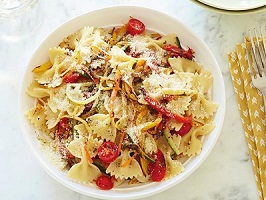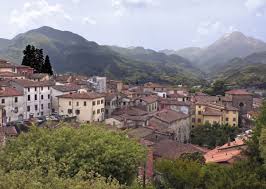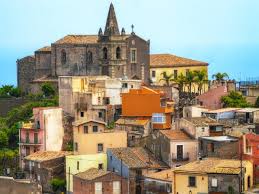Italy: Only one way to make pasta

Rome: There is only one way to make pasta, as any Italian will tell you. But it is not a national consensus, regional speciality or even an ancient recipe. The best pasta is simply nonna’s. The one your grandmother makes.
Vicky Bennison bought a house in the Marche region of central Italy 15 years ago. She was in her forties, with a background in international development. She had published a couple of books on Spanish culture and cuisine but couldn’t find a way into writing about food more regularly.
One day she got talking to Alessandro, the manager of a local supermarket, about pasta. He said his grandmother was a great cook but he had never cooked with her, so Vicky invited them both to her house.
“It was a great day,” she recalls. “They loved doing it together.” Maria made tagliatelle with a ragù in the Marche style, where they use a mixture of meats and add allspice. Bennison filmed it and her TV producer husband said, “Now you’ve got some footage, why don’t you put it on YouTube?” Pasta Grannies was born.
Over the past four years, Bennison has filmed more than 200 Italian grandmothers making every shape and style of pasta, from bolsters of gnocchi (drowned in cream and browned butter and served over polenta) in the Italian Alps to orecchiette (little ears) in Puglia. Her YouTube channel now has 385,000 subscribers.
“We’re really popular in Iceland for some reason,” she says. The videos are important oral history, often recording unique recipes, but it’s the grannies themselves who have proved globally appealing. “It’s not about pasta-making really,” says Bennison. “It’s more like a warm hug.”
Nonna Peppa, who is famous in her village for making ‘pici’ – a hand-rolled spaghetti-snake – for the local ‘sagra’, or fete © Federica di Giovanni
In February, I flew to Bologna to meet Bennison and her “granny finder” Livia De Giovanni, a chef, to watch them film. “The grannies are the last generation that had to make pasta every day to feed their families,” Bennison explains. “I wanted to celebrate older women and their experiences. These women are survivors, they have a lot of stories of hardship.”
In Faenza on a Sunday afternoon, we meet Maria Argnani, 85, making strichetti con prosciutto e piselli, a butterfly-shaped pasta with ham and peas. Growing up, her mother was often ill so, as the eldest of four, Argnani used to wake at five to milk the cows. “I prefer to forget about this time. There was a war. We went to school without shoes. If we had chickens, we sold them to pay debts.”
Argnani is wearing a chic navy cardigan and has curled her hair for the cameras. She left school aged nine but is articulate and quite modern in her technique — weighing the flour and resting her dough.
“I’ve noticed that many of the grannies hang back in the shadows,” Bennison tells me. “Somehow, they want to be invisible, even though they are very much at the heart of their families.”
Maria Argnani, 85, prepares the pasta for ‘strichetti con prosciutto e piselli’ at her home in Emilia-Romagna © Federica di Giovanni
In Italy, Sunday lunch is traditionally pasta at nonna’s house. Earlier, Argnani had made tortellini with spinach, ricotta and sage butter for her family. “I think it is important to have one day,” Argnani’s daughter says, “one moment when we all come together at the table and eat.”
For the first three years, hardly anyone watched Pasta Grannies. “I remember Christmas 2017,” Bennison says. “I had 5,000 subscribers and, to be honest, I was pretty proud of that.” Then a series of links by social media aggregators began to cause a “cascade effect”.
When Business Insider profiled Pasta Grannies in August last year, suddenly “the dam burst and everything went ballistic”. Bennison got an agent and a Pasta Grannies cookbook is due out this autumn.
YouTube has made noises about featuring Pasta Grannies on its “spotlight channel”, which could triple her subscribers, pushing them over the magic one million mark. They want her to post longer videos and more often. “I’ve been learning social media as if it was a foreign language,” Bennison says, admitting she still doesn’t understand the advertising revenue algorithms.
Her earnings veer between roughly £2,000 a month and a quarter of that, despite growing viewing figures. More money would mean better production values and expansion. “I’ve registered the name Spicy Grannies already. I want to do Asia.”
From Faenza in Emilia-Romagna, the grandmother lode of egg pasta, we drive south to Tuscany. The land is dulled brown, the sky cold and blue. De Giovanni and Bennison discuss whether cappelletti (little hats) should be stuffed with meat or cheese. In the Marche, they make it with meat, but De Giovanni is adamant that cappelletti is an Emilia-Romagna speciality, so the proper version should be with cheese.
“Italians always think they are right,” De Giovanni laughs. “Italy is very regional.” In the south, for example, they grow durum wheat, a hard grain, and tend to use only water to make pasta. In the north, they grow a softer wheat, known as tenero in Italian, and use eggs for structure and chewiness.
Chefs and culinary associations have begun to standardise recipes but Bennison complains that in doing so they ignore the variety and particularity of the home cook. “For example, Rosetta and her friends in Liguria make a pesto without nuts and they add a kind of local young cheese that tastes a bit like yoghurt. It’s a way of extending the ingredients. But it’s not what has been decreed to be pesto alla Genovese.”
Words such as traditional and authentic are the province of tourist boards; nonne make do with what they have: a wobbly wheel pasta cutter, supermarket passata, peas from the garden, breadcrumbs instead of expensive Parmigiano. Some roll their pasta by hand, others use a hand-cranked pasta machine. Some swirl their pasta into the sauce on the stove, others dress it separately on the plate. I had always thought starchy pasta water was an important ingredient for bringing the sauce together; Bennison tells me one granny saves her pasta water to rinse her dishes, a gesture of long-inculcated privation from a time when there was no running water in the house.
In Tuscany, we meet Giuseppina Spiganti, 92, known as Peppa, who is famous locally for making her pici, a hand-rolled spaghetti-snake, over the past 50 years for the village sagra, or fete.
When we arrive, Peppa is standing ready behind her pasta board. She makes a well of flour and cracks a single egg into it. Pouring water over one hand, she whisks the egg and water and flour into a slurry with her fingertips.
When the dough begins to come together, she scrapes sticky scraps from the board and presses the dough into a fat bolster, kneading it with a rocking-rolling rhythm. Her shoulders draw into a hunch and her body leans forward. The sound of her breathing mixes with the noise of the boiling water and the crackle of a wood-burning stove. Her fingers are thick and her wrists are swollen with arthritis, but her palms are as soft as old cotton sheets. When the dough is a smooth disc, she cuts off slices and rolls them into thin ropes with two hands, working on muscle memory, her eyes closed.
Four generations have gathered for the filming. Peppa’s daughter-in-law, Graziella, brings out a tray of pici she had made earlier to show me. Her husband, Peppa’s son, is worried this might upset his mother. Respect is always given to nonna, whose pasta is considered the best.
De Giovanni tells me: “I never make pasta for my parents. Even if I am a chef, it is understood that my mother is better than me and they don’t let me. It’s the mentality.” However, after an hour of kneading and rolling, Peppa grows tired: “I have the heart to do it, but not the strength.” Graziella takes over, rolling pici as fast as a machine.
Graziella says she is teaching her own granddaughter, Mathilde, to make pici. Pasta grannies and their families are inevitably a self-selecting group who keep the traditions but, generally, younger Italians don’t make pasta by hand any more — it’s time-consuming and you can easily buy some in a supermarket.
But something more than tradition is being lost; making pasta is tactile, it is care and time and love too. Pasta Grannies show a way to live as much as they demonstrate how to make spaghetti.
“People talk about the Mediterranean diet,” says Bennison, “but it’s really the Mediterranean lifestyle. Life without stress. A certain frugality, which I think is very underestimated. Moderate activity. The grannies have stayed in the same place all their lives, surrounded by family.”
I watch Mathilde and her sister hug their great-grandmother and tell her how beautiful she is. Peppa’s smile climbs all the way up her face so that her eyebrows rise up too. She spoons tomato sauce over her cooked pici and we all tuck in.





